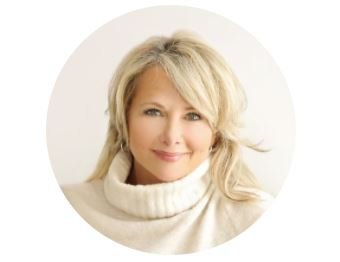April 8, 2021

Suzanne:
- How long have you been with Stance? What inspired you to join Stance’s design team? I’ve been with Stance for 4 years. I was drawn to the idea of a small company with a specialized focus on Behavioral Health, and appreciated how they apply research to design through a deep understanding of the patient/end-user experience.
- Tell us about one Stance product you’re proud of and the story behind its design. The Resilia drum table is a great example of a product that was truly born out of an observed need. About 10 years ago, I began noticing that laminate, a popular surface material for healthcare tables, tended to chip with wear causing “pick points”– which becomes a safety issue as well as a maintenance problem in Behavioral Health settings specifically. Literally with one strip of laminate pulled off, a weapon could be made. I pitched the idea to Stance and very quickly worked with Bruce Kennedy of Stance to design Resilia, which is covered in a highly durable material that withstands use and tampering, and is typically used as a flooring material for high-traffic areas. It is truly a game-changer for the occasional tables category, working well and lasting significantly longer than most other products used in any healthcare setting.
- As a designer, where do you draw inspiration from? I am always observing and experiencing the good and bad of the patient/user experience. Oftentimes, noticing what isn’t working inspires me to imagine new ways products and settings can be made better and improve the experience for patients, care providers, and visitors. I’m also inspired by nature and how it is innate to our human source of peace and strength.
- What are three words to describe your design approach for any healthcare setting? Comfort, confidence and clarity
- From your perspective, what sets Stance’s designs apart from competitor products? The proven durability of our products, and our overall quality – how rare it is for there to be problems after installation. Also, the comfort they truly care about providing through their seating product.
- How do you see healthcare design evolving in the next decade? I think we will continue to see more personalized experiences, including a variety of “space within space”, particularly the wait settings; always considering the needs of an individual's moment. For example, a continued mix of gathering space, consultative and spaces of reflection and counsel. My hope is that perimeter seating will not be the typical layout.
- What are you excited to do next with Stance? We have a new lounge group for Behavioral Health that will be coming out soon. My hope is that it will provide comfort in ways that are not typically provided. Stay tuned!

Cesar:
- How long have you been with Stance? What inspired you to join Stance’s design team? I have been with Stance for just over a year now but have known a number of the team members for most of my career. That provided me with insight into the incredible work culture here and I also valued that the company shared a focused vision on improving the physical healthcare space and experience.
- Tell us about one Stance product you’re proud of and the story behind its design. There are a number of new products I’m working on that I’m very excited about but have really enjoyed participating in expanding our roto-molded furniture offerings. Working with monolithic forms allows us to create products that are ideally suited for behavioural health environments while at the same time challenging our design abilities to sculpt pieces that are attractive and comfortable.
- As a designer, where do you draw inspiration from? I think part of what keeps the juices going is being able to find inspiration just about anywhere. Whether it’s other furniture markets, the transportation industry, architecture or of course nature, there’s just so much opportunity to find that new material or design element that can cross-over into the healthcare space.
- What are three words to describe your design approach for any healthcare setting? Has to be Patient, Family and Caregiver. Have to understand how all three will interact with the pieces we design to provide the best overall experience and outcomes.
- From your perspective, what sets Stance’s designs apart from competitor products? There has always been a strong commitment to developing robust products that are built to last. We are continuing to build on that same core focus plus push the design envelope even more with products that contribute to the overall emotional experience of a space, just as much as they do in their performance.
- How do you see healthcare design evolving in the next decade? This past year has really provided some insights into some of the immediate opportunities for change, like designing more flexibility into how spaces and products are used, the need for products to hold up to more stringent cleaning protocols and the importance of using outdoor space in the healing experience. Technology, like in most industries, is forcing rapid change and it will be interesting to see what opportunities come from the surging trend of virtual healthcare.
- What are you excited to do next with Stance? Well, for starters, I’m really looking forward to working with the full Stance team once we are all in our “better” normal. We have further strengthened our manufacturing and design capabilities recently and I am excited about the new product opportunities that will bring us. All in all – just excited to be on this journey and making a difference!
Posted By:
Christy Evangelista at 11:37 AM
|